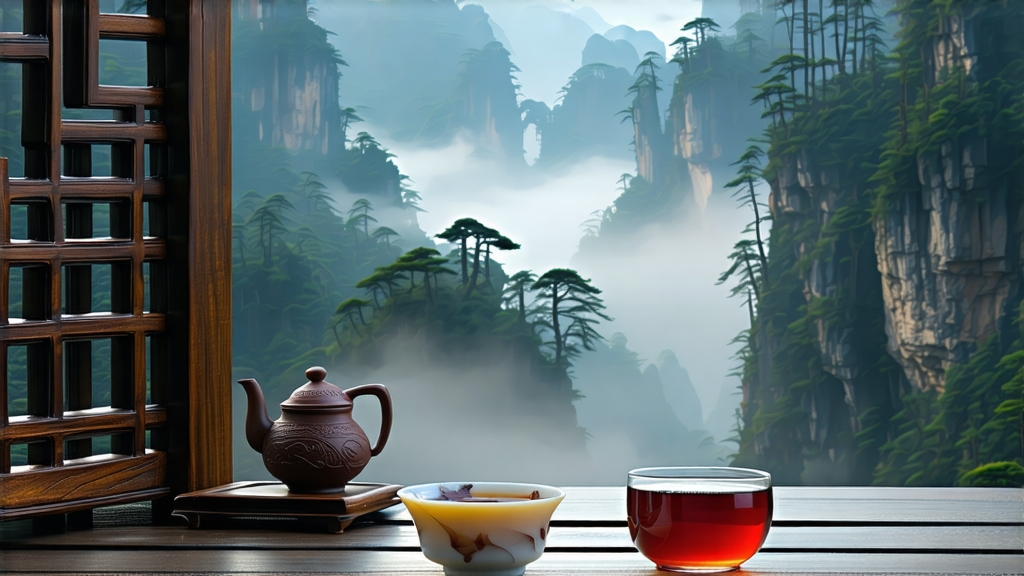
Long before English duchesses measured leaves into silver caddies and Russian caravans creaked across the steppe, the small village of Tongmu deep inside China’s Wuyi Mountains was already perfumed with pine smoke. There, in the mid-seventeenth century, tea makers created what would become the first fully oxidised black tea the world had ever tasted. Locals called it “zhengshan xiaozhong”—literally “small-leaf variety from the original mountain”—but when Dutch traders carried the dark, glossy strips past the granite gorges of Fujian and across the Indian Ocean, Europe pronounced it Lapsang Souchong and fell in love with the taste of camp-fire in a cup. Today the name evokes everything from Sherlock Holmes’ cosy Baker Street hearth to Manhattan cocktail bars where mixologists rinse glasses with its evocative smoke, yet the authentic leaf remains anchored to a protected 270-square-kilometre core zone where the Min River cuts through subtropical forest and the air is thick with camphor, orchids and the resinous breath of Masson pines.
History: myth and mercantile record intertwine. One legend blames an army unit bivouacked among tea factories during the Qing dynasty; pressed for time, workers dried the leaf over burning pine roots to meet the next day’s market, thereby discovering a flavour that travelled better than any green tea had before. More prosaic archives show the Kangxi Emperor (1661-1722) issuing edicts that encouraged Wuyi growers to experiment with deeper oxidation so that compressed “bohea” bricks could survive the long sea voyage to Batavia and Amsterdam. Whatever the spark, by 1700 the East India Company was auctioning Lapsang Souchong in London at prices higher than silver, and its success inspired the British to transplant tea bushes to Assam and Ceylon, forever changing global agriculture.
Micro-terroirs: within the protected “zhengyan” (true cliff) zone, altitude ranges from 600 m to 1,400 m, daily temperature swings exceed 15 °C, and frequent fog filters sunlight into a soft, diffused glow. Such conditions slow photosynthesis, concentrating amino acids and volatiles in the tender spring buds. Outside the gorge, in the “banyan” semi-original area, lower elevation and broader valleys yield a leaf that oxidises faster and absorbs less pine character; it is still sold as Lapsang Souchong, but connoisseurs prize the mineral bite and lingering lychee sweetness that only the high-cliff microclimate can coax forth.
Cultivars: the original shrub is a late-sprouting, small-leaf Camellia sinensis var. sinensis known locally as “cai cha,” prized for low bitterness and high aroma. Over centuries Tongmu villagers have selected three clonal descendants—Xingcun, Zimudan and Jinfeng—each contributing subtle differences: Xingcun lends a hint of dried longan, Zimudan adds cocoa depth, while Jinfeng offers a whisper of narcissus that survives even the smoking process. Plantations are intercropped with towering pines, bamboo and wild cinnamon trees whose roots share mycorrhizal networks, an invisible underground market believed to season the tea with forest terpenes long before the leaf ever meets smoke.
Plucking calendar: the traditional picking window opens on Qingming festival (early April) when two leaves and a bud reach the “sparrow’s tongue” length of 2.5 cm. A second, lesser harvest occurs around Grain Rain (late April), but only spring leaf is deemed worthy of the classical pine-smoke finish. Pickers work barefoot on narrow terraces, laying the shoots into shallow bamboo baskets lined with fresh fern fronds to prevent bruising; any crushed edge would oxidise unevenly and dull the final cup.
Craft: although modern factories in nearby Xingcun town use conveyor belts and electric ovens, the protected core zone must still obey a 2002 Fujian provincial decree that prescribes five strictly manual steps: withering, rolling, oxidising, smoking-drying, and refining. Withering happens overnight on bamboo slats set over a shallow trench where smouldering pine logs (Pinus massoniana) maintain a gentle 28 °C. The leaf loses 60 % of its moisture while absorbing resinous vapours, a dual process impossible to replicate